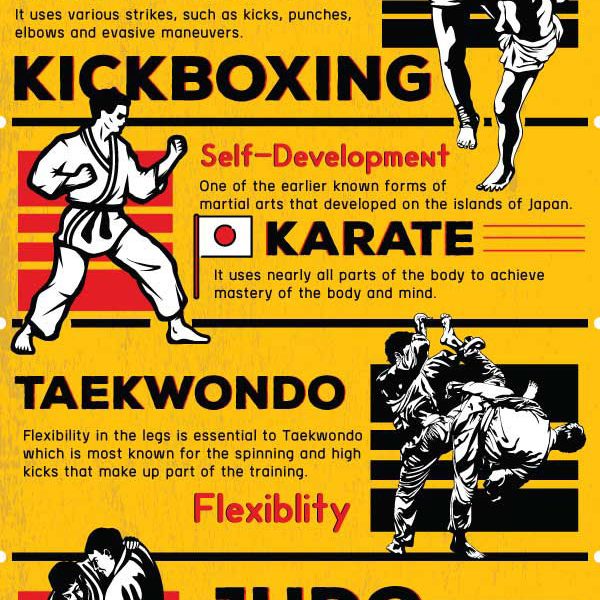Come Discover The Captivating Globe Of Martial Arts, Where Ancient Traditions Meet Contemporary Effectiveness - A Journey Into Background And Ideology Awaits.
Come Discover The Captivating Globe Of Martial Arts, Where Ancient Traditions Meet Contemporary Effectiveness - A Journey Into Background And Ideology Awaits.
Blog Article
Article Written By-Ryberg Montoya
Step into the old globe where martial arts were substantiated of necessity in varied regions. Societies crafted distinct combating designs intertwined with historical contexts. Methods progressed over centuries via dedicated method and cultural exchanges. Today, modern martial arts blend typical elements for maximum efficiency. Philosophically, martial arts stress discipline, self-improvement, and consistency. Regard, humility, and equilibrium are foundational concepts directing practitioners in the direction of growth and durability. Discover the midsts of this rich history and approach to reveal the extensive impacts forming this long-lasting technique.
Beginnings of Martial Arts
Fighting style came from numerous areas worldwide, progressing as practical combat systems to prevent dangers. These old combating styles were established out of requirement, with each culture crafting strategies suited to their one-of-a-kind environments and obstacles. From the grappling arts of Jujutsu in Japan to the striking strategies of Kung Fu in China, martial arts were deeply linked with the historical, social, and cultural fabric of their particular societies.
In Japan, the samurai course refined martial arts like Kenjutsu, the art of the sword, which later advanced right into the more popularized form of Kendo. At the same time, in Brazil, Capoeira became a mix of dance and combat, produced by enslaved Africans as a way to resist oppression. Each martial art brings with it an abundant history and approach, reflecting the values and beliefs of individuals that exercised them.
As you look into the origins of martial arts, you reveal a tapestry of human resourcefulness, resilience, and the unyielding spirit of warriors throughout time.
Development of Techniques
With centuries of technique and refinement, battle strategies within various martial arts have actually gone through a profound evolution. From ancient styles like Martial art and Karate to extra modern-day self-controls such as Brazilian Jiu-Jitsu and Krav Maga, the advancement of methods has been driven by a combination of social influences, sensible applications, and technological advancements.
One considerable facet of this development is the cross-pollination of methods between different martial arts. As an example, techniques from typical Japanese Jiu-Jitsu were integrated into the production of Judo by Jigoro Kano in the late 19th century. This mixing of designs has led to the growth of hybrid martial arts like Mixed Martial Arts (MMA), which combine aspects of striking, grappling, and entry techniques.
Furthermore, the advancement of techniques has been formed by the increasing emphasis on effectiveness and performance in combat. Experts have actually constantly sought to fine-tune their strategies via strenuous training, experimentation, and competitors, resulting in the growth of very specialized and effective battling styles. Highly recommended Web-site , the development of strategies in martial arts shows the dynamic nature of fight and the continuous pursuit for enhancement and technology.
Philosophical Structures
Discovering the underlying philosophical concepts of martial arts gives insight into their core values and directing ideas. At https://blockclubchicago.org/2022/06/24/jiu-jitsu-black-belt-uses-martial-arts-skills-to-subdue-man-who-punched-an-uptown-7-eleven-employee/ of lots of martial arts disciplines is the concept of self-control itself. By training your body and mind to serve as one natural system, you cultivate self-control that extends past the dojo or health club into day-to-day life. This self-control includes respect, humbleness, and self-constraint, shaping not just your physical capabilities but also your personality.
Another fundamental philosophical structure in martial arts is the idea of continuous self-improvement. The trip of understanding a fighting style is endless, with professionals constantly making every effort to much better themselves, both literally and psychologically. This concentrate on growth cultivates strength, determination, and a growth frame of mind that can be applied to all elements of life.
Moreover, martial arts emphasize the value of harmony and balance. Methods are created to utilize an opponent's power against them, highlighting the principle of producing and rerouting pressure as opposed to fulfilling it head-on. This viewpoint includes social partnerships, promoting relaxed resolutions and mutual understanding. By accepting these thoughtful structures, martial artists not only boost their battle abilities yet also cultivate a lifestyle fixated personal growth, respect, and harmony.
Verdict
Finally, the history and philosophy of martial arts offer an abundant tapestry of tradition, discipline, and self-improvement.
Take for example the story of Bruce Lee, who transformed martial arts by mixing different designs and philosophies to develop his very own unique kind of Jeet Kune Do.
Through dedication and development, martial artists continue to press limits and motivate others to reach their full possibility both in combat and in life.
